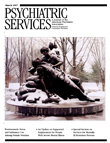Service system performance and integration: a baseline profile of the ACCESS demonstration sites. Access to Community Care and Effective Services and Supports
Abstract
OBJECTIVE: Networks of agencies at the 18 demonstration sites in the Access to Community Care and Effective Services and Supports (ACCESS) program for homeless persons with serious mental illness were surveyed to profile baseline levels of systems performance and integration as part of a longitudinal evaluation of systems change and client outcomes. METHODS: Interviews were conducted with a representative from each of 875 agencies in the 18 service networks. Information was obtained about the perceived performance of the service system and the extent of systems integration as measured by client referrals, funds exchanges, and information sharing between agencies. Measures consisted of two multi-item scales assessing the accessibility and coordination of services for the target population in each community and four indexes of interagency relationships. RESULTS: Services at baseline for homeless mentally ill persons at the program sites were rated as relatively inaccessible, and the coordination of services between agencies was rated as even more problematic. Interagency ties were largely based on client referrals and information exchanges, with very few instances of funding transfers in the form of contracts or grants. On average, at baseline agencies that had received an ACCESS grant were better connected to their local service network than were other agencies. CONCLUSIONS: Consistent with the premise of the ACCESS demonstration, services for persons who are homeless and mentally ill in urban America are fragmented and not very accessible. The longitudinal design of the evaluation will allow for an assessment of efforts to improve services and systems integration and of the effects of these improvements on client outcomes.



